If you’re lucky enough to have a small outdoor space, you know how important it is to make the most of every inch. Deck hanging planters are a great way to add a touch of greenery and life to your space, even if you don’t have a lot of room for traditional potted plants.
Deck hanging planters are versatile. There are endless possibilities for incorporating these charming and functional accessories into your space. In this post, we’ll share seven creative ideas for using deck hanging planters in small spaces, and offer some tips and inspiration along the way.
7 Creative Ideas for Using Deck Hanging Planters in Small Spaces
1. Vertical Gardening
One of the best ways to make the most of a small space is to go vertical. Deck hanging planters are a great option for creating a vertical garden on your deck, balcony, or patio. This can be as simple as attaching a few pots to a wall or railing or as elaborate as building a custom shelving unit specifically for your plants.
One great example of vertical gardening in action is the work of botanist and artist Patrick Blanc. His vertical gardens, also known as “mur végétal,” use a combination of soil, water, and plants to create a living wall that can be installed on virtually any surface.
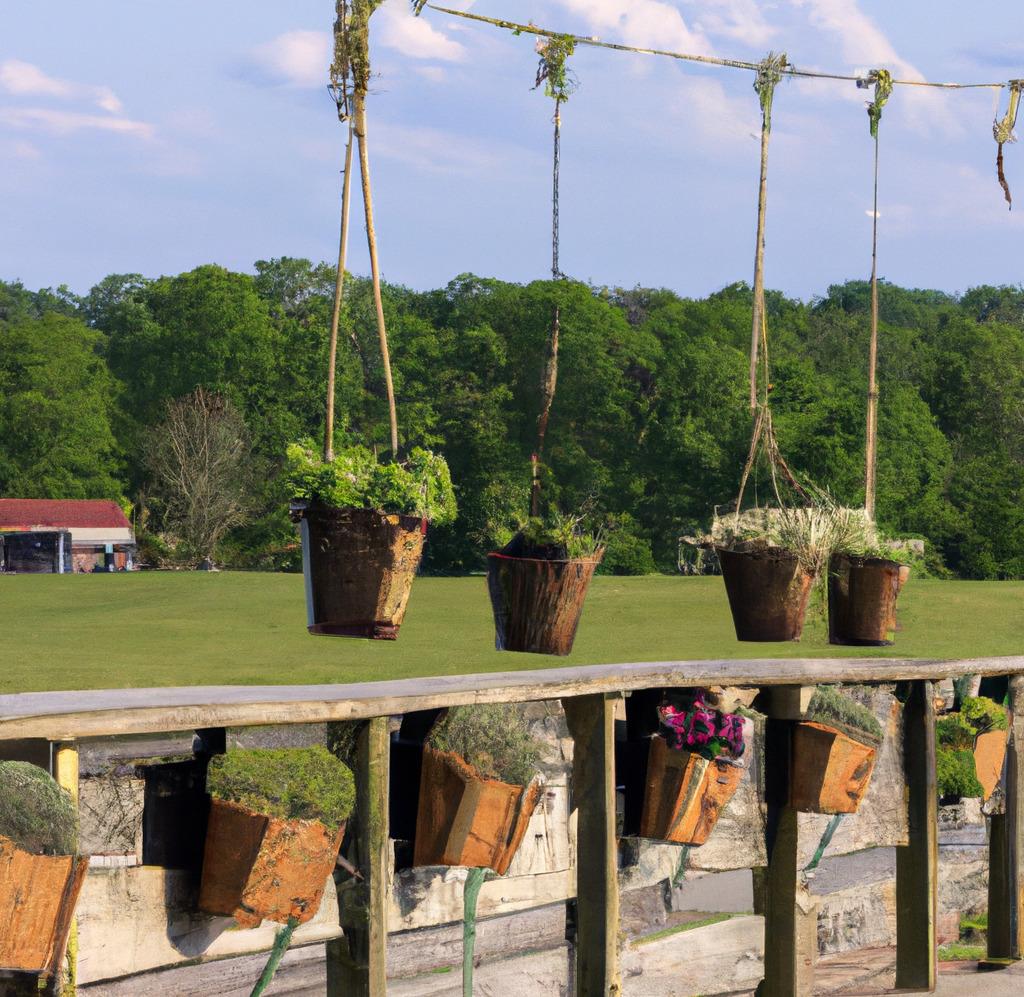
“The vertical garden is a way of gardening that allows people living in cities to reconnect with nature,” says Blanc. “It brings a little piece of the natural world into our daily lives, and it helps to improve the air quality in our homes and workplaces.”
There are many benefits to incorporating a vertical deck hanging planters into your small space. In addition to adding visual appeal, vertical gardens can help filter and purify the air, provide insulation for your home, and even reduce noise pollution. They are also a great way to create a sense of privacy and separation between you and your neighbors, particularly if you live in a densely populated area.
2. Hanging Herb Garden
If you love to cook and are always in need of fresh herbs, a hanging herb garden might be the perfect solution for your small space. Deck hanging planters are an easy and convenient way to grow a variety of herbs right outside your kitchen door.
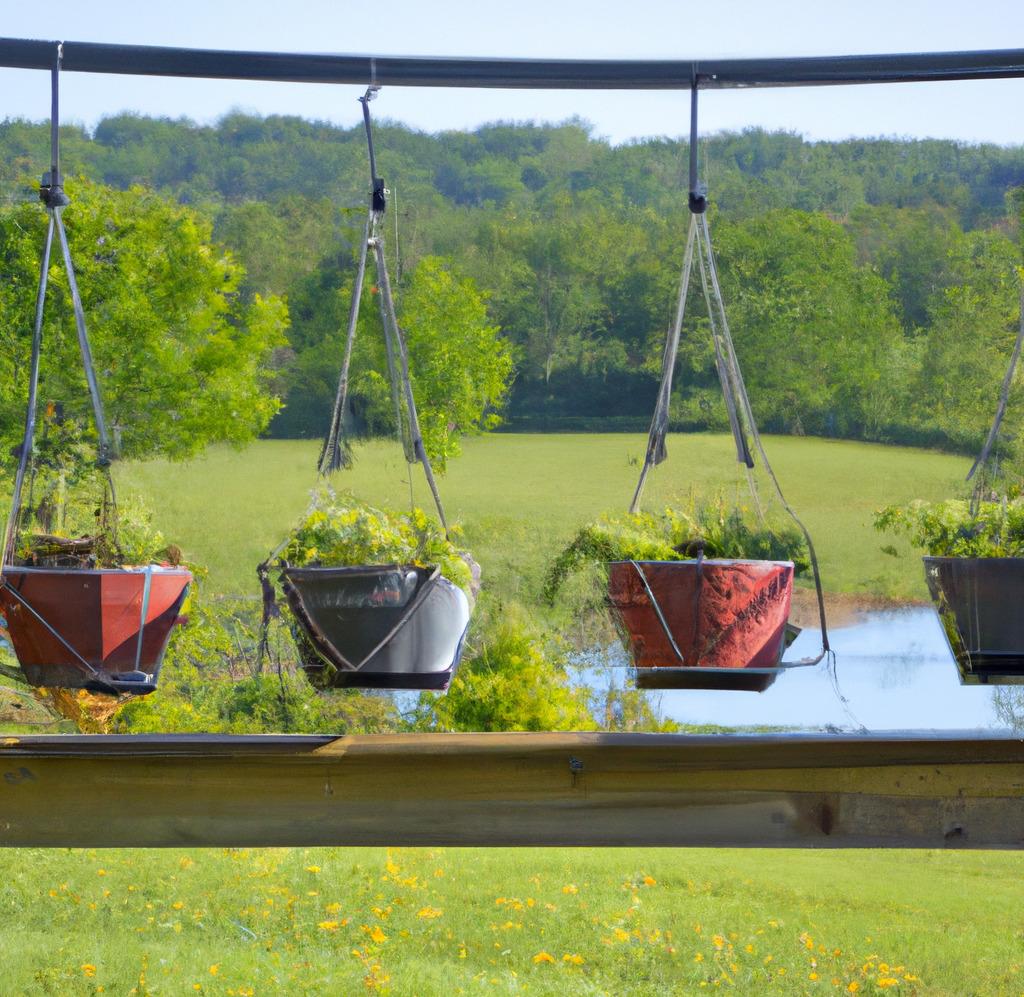
One creative option is to use a series of small pots or containers that can be hung from a railing or fence. This allows you to easily snip off a few sprigs of basil, cilantro, or mint whenever you need them. Alternatively, you could use a single large planter to house a selection of your favorite herbs.
“One of the biggest benefits of using deck hanging planters is that they allow you to take advantage of vertical space,” says Kalafatis. “Whether you’re growing herbs, tomatoes, or lettuce, having plants at different heights can help to create a more diverse and dynamic garden.”
3. Mix and Match Planters
Another creative way to use deck hanging planters in small spaces is to mix and match different styles and sizes. This can add visual interest to your space and help break up the monotony of a single row of pots.
For example, you might use a combination of small, medium, and large planters or mix-and-match pots made from different materials, such as ceramic, metal, and plastic. You could also play around with color, using bright and bold hues to add a pop of personality to your space.
4. Living Wall
If you really want to make a statement with your small space, consider creating a living wall using deck hanging planters. This can be as simple as attaching a series of pots to a wall or fence or as complex as installing a custom-built living wall system.
Living walls have a number of benefits beyond just being visually appealing. They can help filter and purify the air, provide insulation for your home, and even reduce noise pollution.
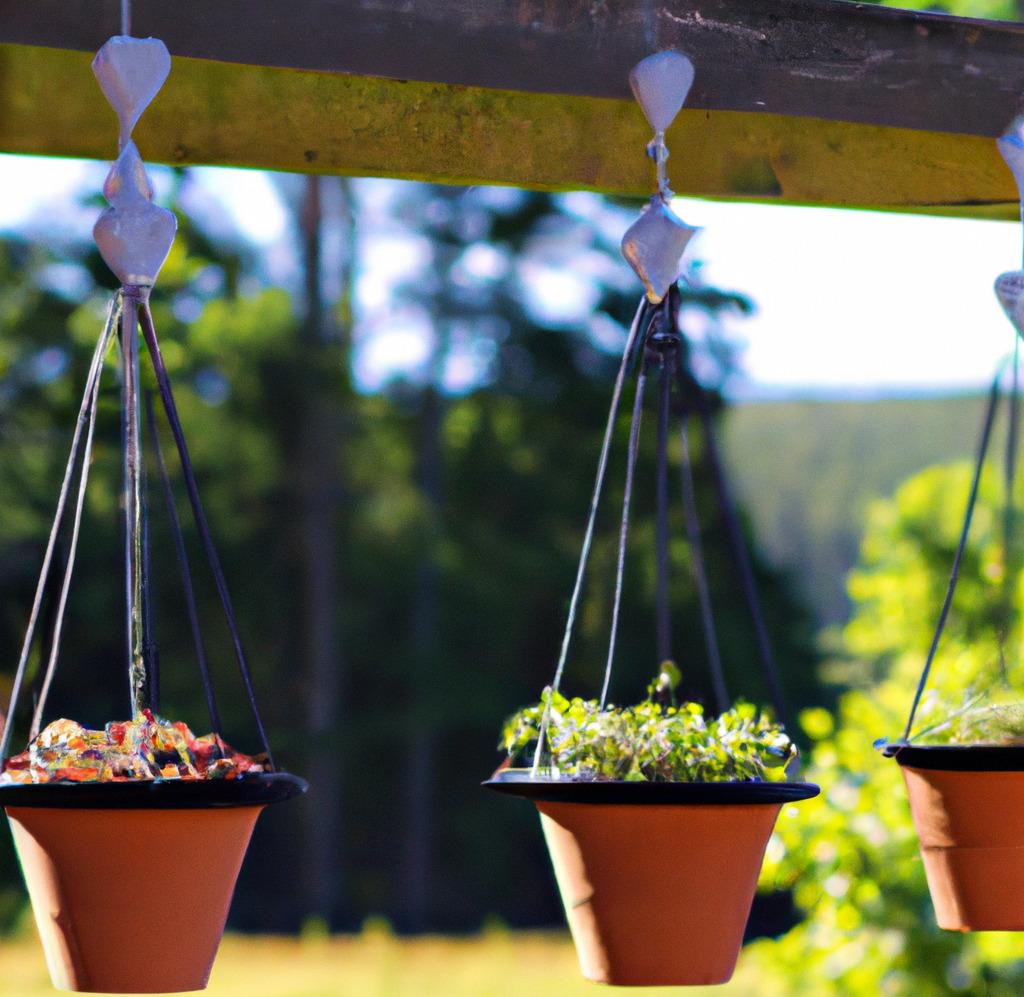
“The living wall has become one of the most beloved features of our home,” says architect and designer McDonough. “Not only does it provide a beautiful, natural backdrop for our outdoor space, it also serves as a natural air purifier and helps regulate the temperature of our home.”
Deck hanging planters can also be used as a form of wall art. By using a variety of plants with different colors, textures, and shapes, you can create a living mosaic that adds visual interest to your outdoor space.
5. Suspended Planters
If you don’t have a lot of wall or railing space available, you can still use deck hanging planters to add greenery to your small space. Suspended planters, which hang from the ceiling or an overhead structure, are a great option for creating a vertical garden in tight quarters.
6. Privacy Screen
If you’re looking for a way to add privacy to your outdoor space, consider using deck hanging planters as a natural screen. You can plant tall, fast-growing species like bamboo or hedges in large pots and arrange them in a way that creates a natural barrier. This can be especially useful if you live in a densely populated area and need a little extra separation from your neighbors.
7. Accent Pieces
Deck hanging planters can also be used as accent pieces to add color and interest to your outdoor space. You can use a single large pot to make a statement or group several smaller pots together to create a cohesive look.
Deck hanging planters are also a great option for creating a container garden on your deck or patio. You can mix and match different sizes and styles of pots to create a dynamic and visually appealing display.
Overall, deck-hanging planters are a great way to add some greenery and life to your outdoor space. With a little bit of planning and creativity, you can use them to create a beautiful and functional display that will bring joy and beauty to your deck or patio.
How to Create a Vertical Garden
A living wall, also known as a vertical garden or green wall, is a unique and creative way to bring a touch of nature to your small outdoor space. These gardens are created by attaching pots or containers filled with plants to a wall or other vertical surface, allowing you to take advantage of vertical space and create a lush, green oasis in even the smallest of areas.
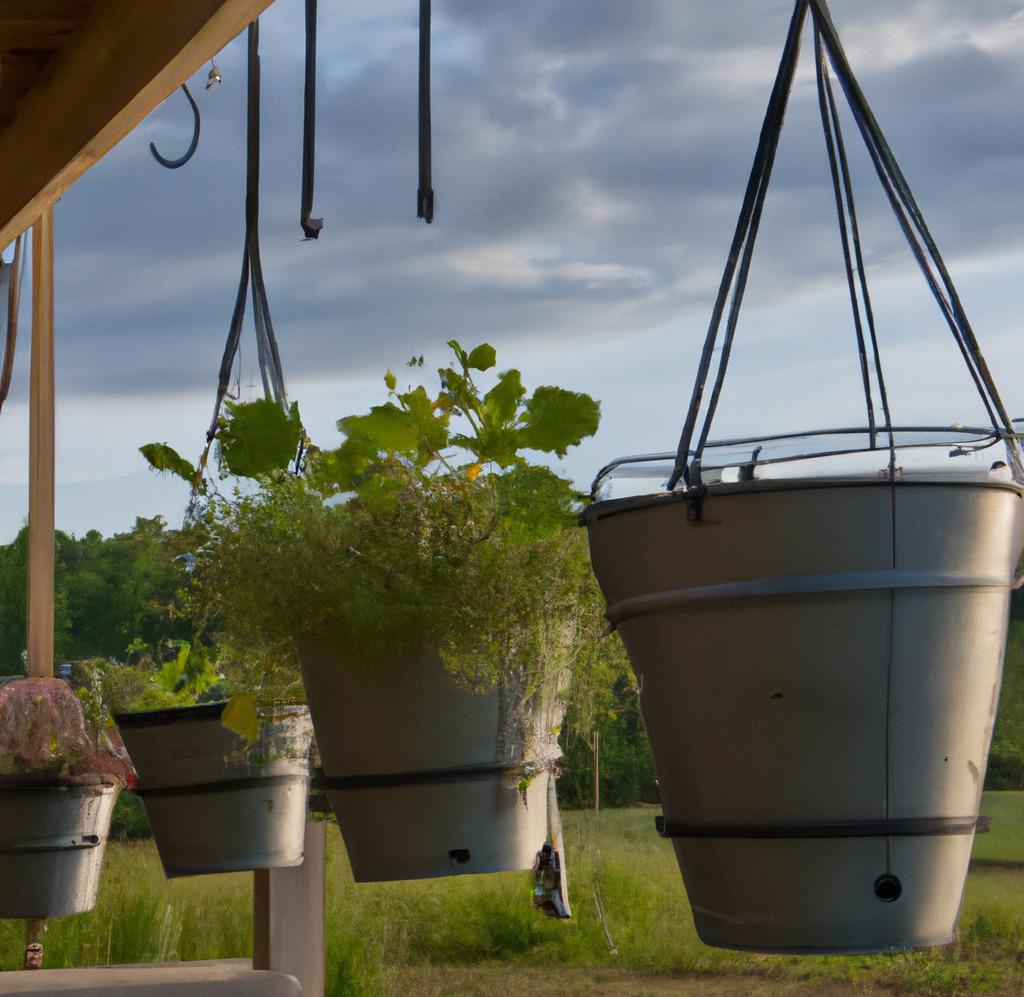
There are a few different approaches you can take when creating a vertical garden in your small space.
- Use a series of pots or containers: Use containers that can be hung from a wall or railing, much like a traditional hanging plant. This allows you to mix and match different sizes, shapes, and styles of pots to create a cohesive and visually appealing display.
- Use a custom-built living wall system: These systems are typically designed to hold a series of pots or containers in a grid-like pattern, and can be easily installed on virtually any wall or fence. Some living wall systems are even designed to be self-watering, which can make it easier to maintain your garden with minimal effort.
- Choose the right plants: Look for species that are well-suited to life in containers and can thrive in the specific conditions of your space (e.g. exposure to sun, wind, etc.). Succulents, herbs, and small flowering plants are all good options for a vertical garden.
With a little bit of planning and creativity, a vertical garden can be a beautiful and functional addition to your small outdoor space.
4 Tips to Deck Hanging Planters
No matter how to use deck hanging planters in your outdoor space, there are a few key considerations to keep in mind. Here are a few tips to help you get started:
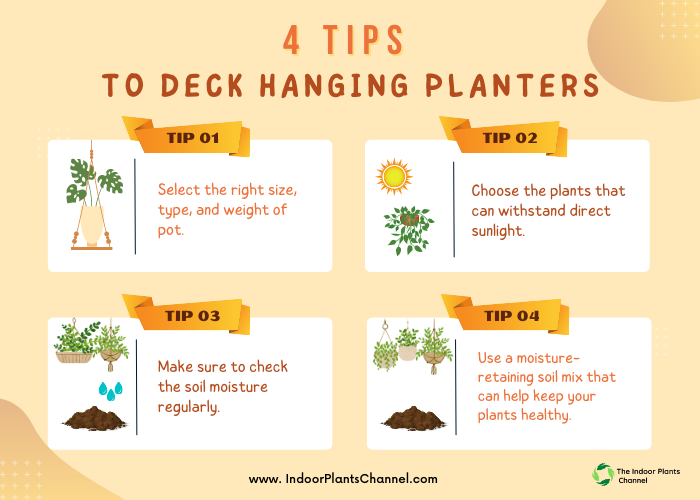
1. Select the Right Size and Weight of Pot:
When selecting deck hanging planters, it’s important to consider the size and weight of the pot, as well as the material it is made from. Aluminum pots, for example, are lightweight and corrosion-resistant, making them a good choice for plants that don’t require a lot of water. Steel pots, on the other hand, are heavier and more durable, making them a good choice for plants that need more support or for areas with high winds.
2. Choose the Right Plants:
When selecting plants for your deck hanging planters, consider the amount of sunlight and other conditions your plants will need. Some good options for deck hanging planters include trailing plants like petunias or ivy, herbs like basil or mint, and small flowering plants like begonias or impatiens.
3. Use a Moisture-Retaining Soil Mix:
Metal pots can dry out more quickly than other materials, so it’s important to use a soil mix that will retain moisture and help to keep your plants healthy. You can find specialized soil mixes at your local garden center, or you can make your own by mixing equal parts potting soil, compost, and perlite or vermiculite.
4. Watering:
Make sure to check the soil moisture level regularly and water as needed to keep your plants healthy and hydrated. You may also want to consider using a moisture-retaining soil mix to prevent your pots from drying out too quickly.
Overall, deck metal hanging planters are a great way to add some greenery and life to your small outdoor space. With a little bit of planning and creativity, you can create a beautiful and functional display that will bring joy and beauty to your deck or patio.
Frequently Asked Questions
- What are some good plants to use in deck hanging planters?
“When selecting plants for your deck hanging planters, consider the amount of sunlight and other conditions your plants will need. Some good options for small spaces include trailing plants like petunias or ivy, herbs like basil or mint, and small flowering plants like begonias or impatiens.” – Sarah Brown, Horticulturist at the New York Botanical Garden
- How do I choose the right size and type of pot for my plants?
When selecting deck hanging planters, it’s important to consider the size and weight of the pot as well as the material it is made from. Aluminum pots, for example, are lightweight and corrosion-resistant, making them a good choice for plants that don’t require a lot of water.
Steel pots, on the other hand, are heavier and more durable, making them a good choice for plants that need more support or for areas with high winds
- How do I care for my plants in deck hanging planters?
Make sure to check the soil moisture level regularly and water as needed to keep your plants healthy and hydrated. You may also want to consider using a moisture-retaining soil mix to prevent your pots from drying out too quickly. In addition, be sure to fertilize your plants according to their specific needs and prune as needed to encourage healthy growth.
- Can I use deck hanging planters to create a container garden?
Yes, deck hanging planters are a great option for creating a container garden on your deck or patio. You can mix and match different sizes and styles of pots to create a dynamic and visually appealing display.
Just be sure to choose plants that are well-suited to your climate and the amount of sunlight and other conditions they will receive, and make sure to water and fertilize them according to their specific needs.
- Can I use deck hanging planters in areas with high winds?
Yes, you can use deck hanging planters in areas with high winds, but it’s important to choose the right type of pot for your plants. Metal pots, for example, are heavier and more durable, making them a good choice for plants that need more support or for areas with high winds.
You can also consider using pots with a more compact shape, or pots that are designed to be secured to a wall or railing. Just be sure to choose pots that are well-suited to the specific needs of your plants and your outdoor space.
Conclusion
Deck hanging planters are a great way to add some greenery and life to your outdoor space, even if you have limited space. There are many different styles and materials to choose from, making it easy to find a pot that fits your style and budget. Whether you want to create a vertical garden, a hanging herb garden, or simply add some colorful accents to your space, there is a deck hanging planter option that will work for you.
Michelle Wilde
Related posts
3 Comments
Leave a Reply Cancel reply
![]()
About Michelle Wilde
Michelle Wilde is a stay-at-home mom and avid plant lover. Armed with a post-graduate degree in Computer Science (no kidding!), she loves researching plants and landscapes. When she is not caring for her 4 kids, she spends time on her passion for plants. She blogs at www.indoorplantschannel.com, the trusted source for indoor plants.
Learn more
Subscribe
* You will receive the latest posts and updates about indoor plants!
Search
Recent Posts
Categories
- Beginner Guides (10)
- FAQ (206)
- General (2)
- How-To Guides (212)
- Indoor Plants (214)
- Pest Management (2)
- Plant Problem Solutions (4)
- Seasonal Growing (2)
- Specialized Environments (2)
- Specific Plant Care (3)
- Technical Growing (2)
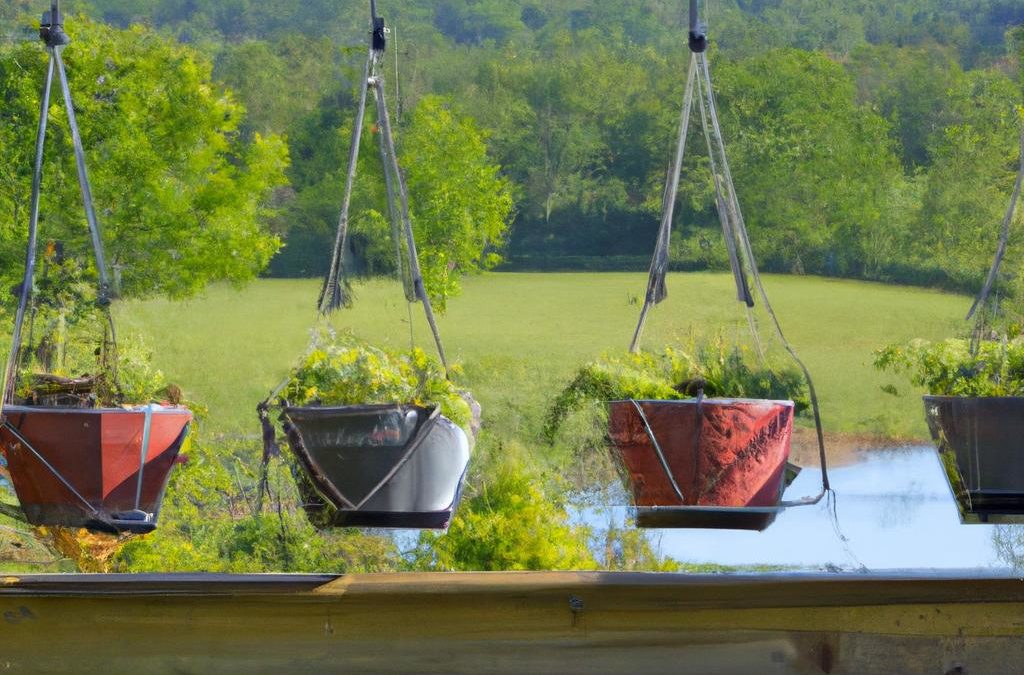
[…] 1 day ago 11 min read […]
[…] lives. One of the best ways to add a bit of greenery to your outdoor space is through the use of wall-hanging planters. These planters are not only stylish, but they are also a practical solution for those with limited […]
[…] easy to install, making them a perfect solution for small backyard or balcony gardens. In addition, hanging planters can add visual interest to your outdoor […]